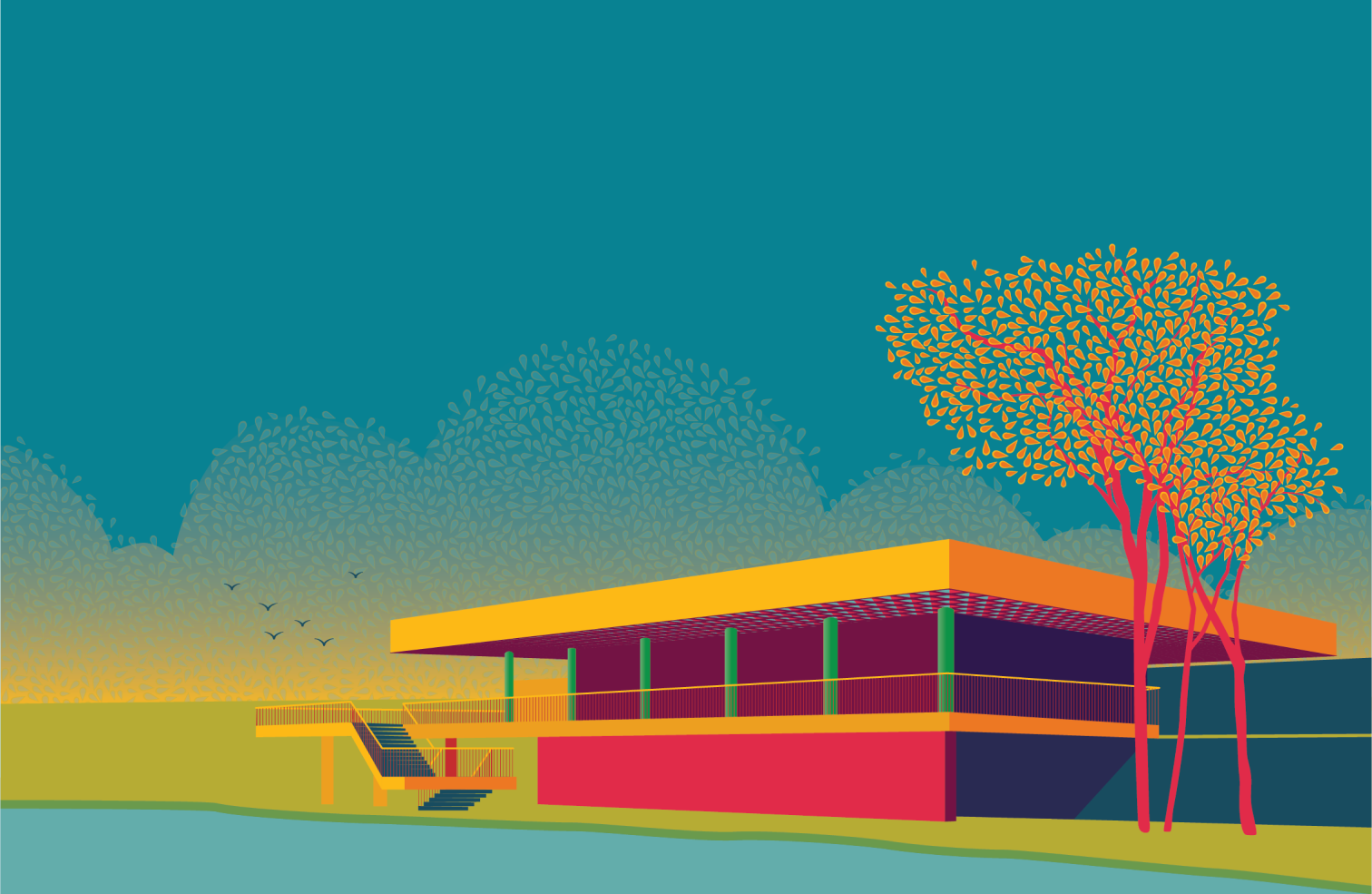Reclaiming the spirit of the shopping mall
February 6, 2023
By Brent Bellamy, Associate + Creative Director
Originally published in the Winnipeg Free Press
The origin of the North American shopping mall is a story of irony and frustration that sent an architect back to Europe resenting what his idea had become.
Victor Gruen, who is considered the father of the modern shopping mall, emigrated to the United States from Austria in 1938. He was a staunch critic of the explosion of automobile-centric suburbs in North American cities after the war.
Gruen lamented that new suburbs prioritized cars and were void of the traditional public spaces that provide opportunity for social connection and participation in community life — places like the narrow streets and squares of his Vienna home.

The 15-minute-cities concept was made famous when it was embraced by Anne Hidalgo, the mayor of Paris. Gruen’s architectural response to this was the indoor shopping mall. He hoped it would be to modern American suburbia what the public square was to old European cities.
In 1956, Gruen designed the world’s first indoor shopping mall, which is still standing today in the Minneapolis suburb of Edina. His vision of an urban centre in the suburbs was more than just a commercial mall in isolation; he had planned a complete mixed-use community of walkable tree-lined streets, high-density housing, schools, pubs, groceries and all the amenities of life, with a climate-controlled mall in the centre acting as its social and commercial heart.
Southdale Center was an immediate success, but with developers having more interest in building money-making commercial space than mixed-use neighbourhoods, it — and the 1,300 malls across North America it would inspire — was instead surrounded by large parking lots catering to drivers.
This would exacerbate the suburban sprawl Gruen despised, and cause the demise of the urban high streets he loved, such as Winnipeg’s Portage Avenue. Gruen would eventually return to Vienna, saying in response to being called the father of the shopping mall, “I refuse to pay alimony to those bastard developments. They destroyed our cities.”
If Victor Gruen were alive today, he might have more optimism because his vision of shopping malls embedded in new urbanist neighbourhoods is finally becoming reality. With a shifting retail landscape, high housing demand and rising real-estate values, mall owners across the continent are looking at their oceans of asphalt parking and asking whether there is a better way to maximize the value of their real-estate asset.
From Halifax to Richmond, B.C., major shopping malls across Canada are seeing proposals to develop high-density mixed-use neighbourhoods in the parking lots that surround them.
Winnipeg’s CF Polo Park has now joined the club, with owners Cadillac Fairview and Shindico Realty unveiling a dramatic area master plan that will establish a new neighbourhood of more than a dozen mid-rise, mixed-use buildings on the 84-acre site.
The plan will create more than 4,000 new homes, almost 1,000 more than in Linden Woods, in an area one-tenth the size.
The billion-dollar private development will help Winnipeg meet its infill growth targets and provide a significant amount of much-needed rental housing for the city. A high-density residential community at Polo Park will create a significant new centre of gravity in the city, and it will be imperative that we look for opportunities to leverage public investment to maximize its positive impact.
One such opportunity is to partner it the Winnipeg Transit Master Plan, likely the most powerful city-building opportunity in Winnipeg’s future. The master plan currently anticipates a rapid-transit line running down the centre of Portage Avenue from a major new station at Portage and Main.
This new development might be the impetus to push our chips in the middle and finally make the investment in light rail transit (LRT), connecting downtown to another major hub at Polo Park, establishing a powerful anchor at each end.
Light rail has proven to be a significant driver of private investment and urban renewal across North America, and with a distance of only five kilometres, the length might be affordable, while providing significant return on investment, by breathing new life into a Portage Avenue that is vital to the health of downtown but is currently on life-support and in need of a big idea.
From a major new Polo Park transit hub, uniquely situated at a circulation crossroads in our city, bus rapid transit could radiate out into the suburbs. Instead of spending between half and three-quarters of a billion dollars to expand Kenaston Boulevard in a vain attempt to reduce traffic congestion, we might consider an alternate strategy that reduces the number of cars travelling on the road.
A high-frequency bus rapid transit corridor centred on Polo Park could connect the Kapyong Barracks development, the Ikea area and Bridgwater town centre in the south, the airport and Red River College in the north. With creative leadership, we might even be able to negotiate a relocation or a shared use of the existing rail corridor beside Polo Park for rapid transit.
At a more granular level, it will be vital that the new development make walking, biking and transit connections that seamlessly weave together the West End and St. James communities, while making deep connections to the neighbourhood high streets of Sargent and Ellice, bringing investment and renewal to the West End.
The master plan for the CF Polo Park area is an exciting development for Winnipeg. With creative thinking and bold public investment, Victor Gruen’s 70-year-old vision for an urban centre in the suburbs might be a catalyst that effects far-reaching change and helps lead Winnipeg into a more progressive future.

